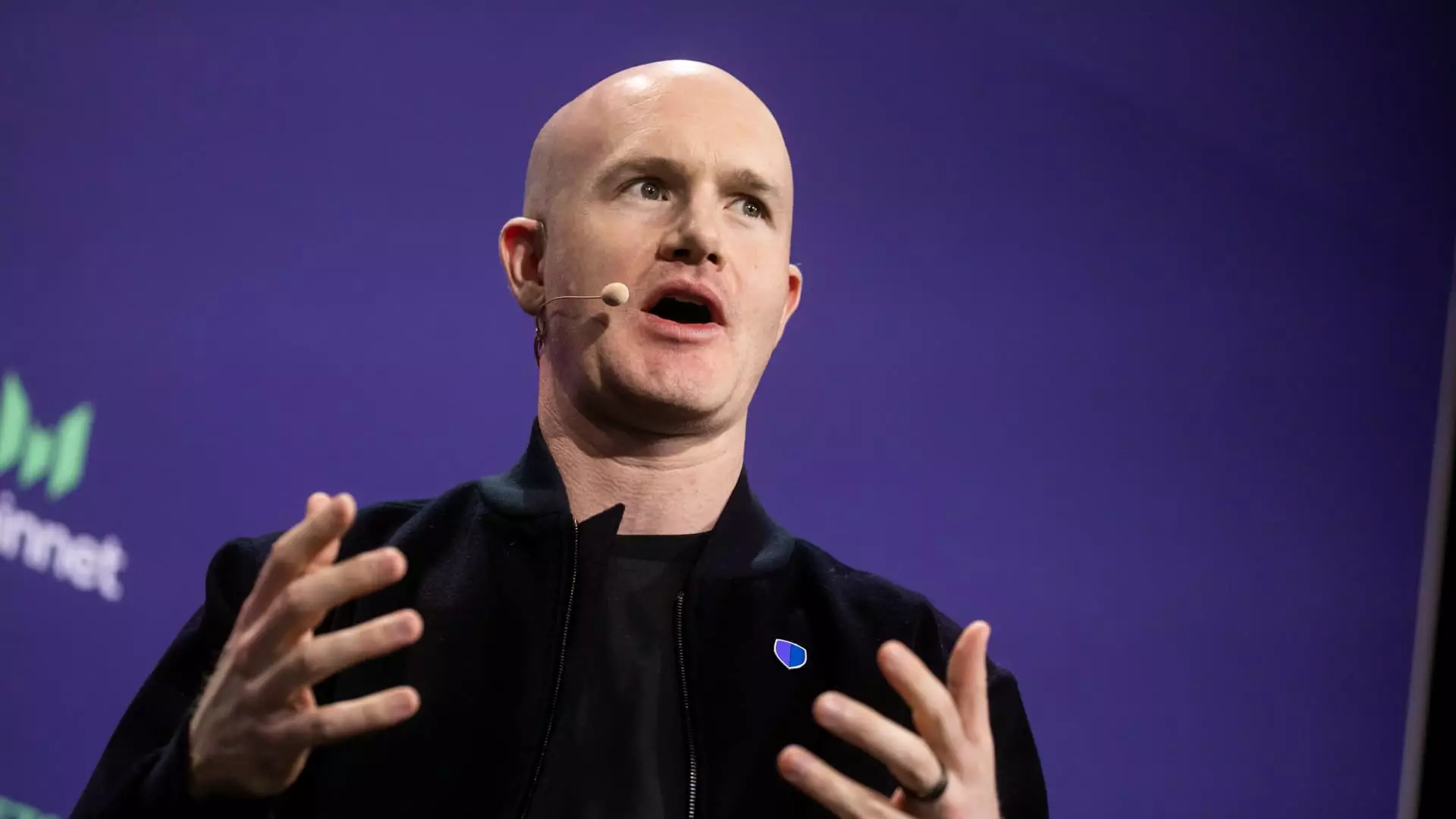Recent words from Coinbase CEO Brian Armstrong paint a vivid picture of the company’s aspirations—one where crypto, as a burgeoning financial service, wrests control from traditional banking paradigms. Armstrong stressed a forward-thinking approach that places Coinbase not just as a cryptocurrency exchange but as a leading financial services provider over the next five to ten years. His proclamation that “crypto is eating financial services” reflects a bold ambition that should not just inspire, but provoke critical thought regarding the future of our economic system.
This ambition is not merely optimistic chatter but includes a strategic pivot into decentralized finance. Moving beyond trading and payment facilitation, Coinbase is actively striving to integrate itself into various financial domains, including money market funds, real estate, and securities. Armstrong’s statement on the fundamental transformation of financial services showcases not just the company’s direction, but a potential seismic shift in how we understand and engage with money.
Crypto’s Intrusive Nature: A Double-Edged Sword
While Armstrong’s vision presents a somewhat utopian outlook—where financial inclusion and efficiency reign—it also raises discomforting questions. The notion that crypto will “eat” traditional financial services can be interpreted beyond mere competition; it suggests an upheaval of financial stability and norms. As technology continues to update the financial system, we must grapple with the reality of what this transition means: Are we equipped to handle the potential volatility and risks associated with such rapid transformations? Even a liberal perspective must admit that for every potential upside, the disruptive nature of this shift could entail societal and economic ramifications that merit careful examination.
With government agencies like the Office of the Comptroller of the Currency easing regulations, a precedent for an unchecked advancement into the crypto sphere is emerging. While it is surely tempting to embrace innovation, one must pause to question whether regulatory safeguards are being sidelined in favor of expedience. What happens when digital assets are overly integrated without robust policies in place to protect consumers and ensure financial stability? The current trajectory appears unbalanced—benefiting companies like Coinbase while leaving the average consumer exposed to the inherent risks of this untested territory.
Revolutionizing Finance or Repeating Mistakes?
Armstrong’s assertion that integrating crypto will enhance traditional banking signals a paradigm shift reminiscent of the 2008 financial crisis, when reckless innovations led to societal upheaval. The promise of stablecoins—deemed the backbone of this new financial ecosystem—rings somewhat hollow when one recalls the fragility of trust in financial products. The heavy push from major banks to adopt stablecoins parallels a distressing narrative: might the same institutions that mismanaged traditional assets be hastily jumping into untested waters once more? The underlying message seems ominous; fast-paced adoption may overlook foundational principles of fiscal responsibility.
Yet, one cannot disregard the potential for significant transformation in creating accessible financial resources. The existence of partnerships between Coinbase and formidable financial giants like BlackRock and PayPal illustrates a paradigm shift towards a more egalitarian distribution of financial services. If executed with prudence, this collaboration could democratize access to financial instruments, rekindling hope for those who remain marginalized by the current system. As Armstrong indicated in his statement on the attractive potential of stablecoins, this new wave of financial technology might redefine wealth management for the common person.
The Race to Dominance: USDC vs. Tether
Armstrong’s goal to make USDC the leading stablecoin offers a compelling narrative of competition in this new medium of exchange. The democratizing power of stablecoins could empower consumers to more effectively transact in a reformulated financial system. However, this ambition necessitates vigilance—a singular focus on market dominance could lead to monopolistic behaviors counterproductive to the very principles of decentralization that blockchain advocates.
Stablecoins’ appeal lies in their perceived stability and interoperability; Armstrong’s caution against individual banks creating their own coins speaks to a much larger concern in maintaining a robust ecosystem where collaboration outweighs division. The technological advantage of USDC is clear, yet what will happen if it exacerbates a consolidation of power that increasing profits for a few leave many behind?
In essence, Coinbase’s growth trajectory embodies the spirit of entrepreneurship and innovation. Yet, we must remain vigilant about the implications of these developments. It is our responsibility to ensure that the promise of financial technology does not come at the cost of equitable opportunity and consumer protection. The interplay of crypto and traditional finance is only just beginning; it is crucial to navigate this transition thoughtfully, espousing the vastly dynamic nature of our evolving financial ecosystem.

Leave a Reply